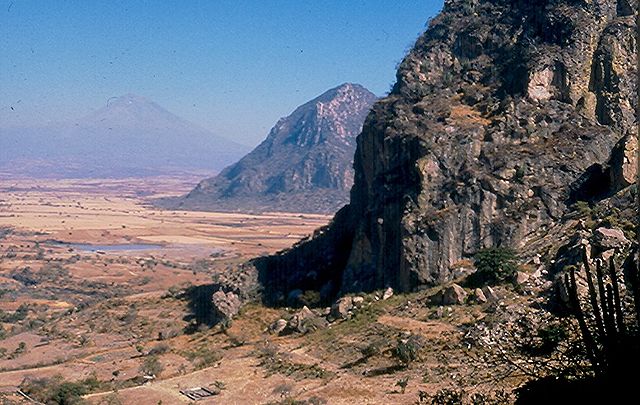Chalcatzingo is a Mesoamerican archaeological site in the Valley of Morelos dating from the Formative Period of Mesoamerican chronology. The site is well known for its extensive array of Olmec-style monumental art and iconography. Located in the southern portion of the Central Highlands of Mexico, Chalcatzingo is estimated to have been settled as early as 1500 BCE. The inhabitants began to produce and display Olmec-style art and architecture around 900 BCE. At its height between 700 BCE and 500 BCE, Chalcatzingo's population is estimated at between five hundred and a thousand people. By 500 BCE it had gone into decline. The climate in Morelos is generally warmer and more humid than the rest of the Highlands. The Chalcatzingo center covers roughly 100 acres (0.40 km2). Evidence indicates that this was a site of ritual significance.
Chalcatzingo archaeological site
The view from a mountain above Chalcatzingo (seen far below). To the right looms Cerro Delgado. Popocatépetl can be seen in the far distance to the north
The pyramid of Chalcatzingo in the Mexican state of Morelos
Monument 31, showing a beaked feline zoomorph atop a recumbent human. Note the 3 stylized raindrops apparently falling from a "Lazy S" figure.
Morelos, officially the Free and Sovereign State of Morelos, is a landlocked state located in south-central Mexico. It is one of the 32 states which comprise the Federal Entities of Mexico. It is divided into 36 municipalities and its capital city is Cuernavaca.
"El exterminio de Morelos"
Temple of the Feathered Serpent, Xochicalco
Capilla abierta of the current Cathedral of Cuernavaca
Monument to Morelos








